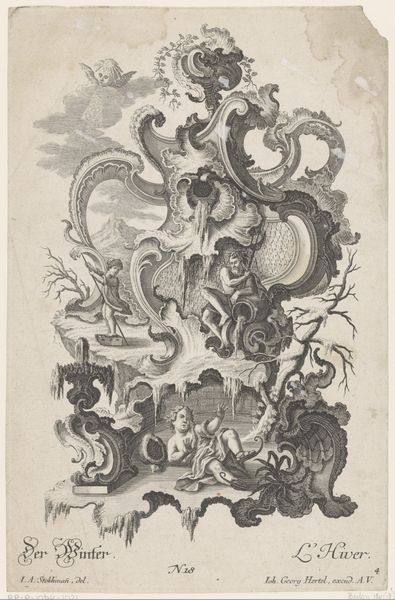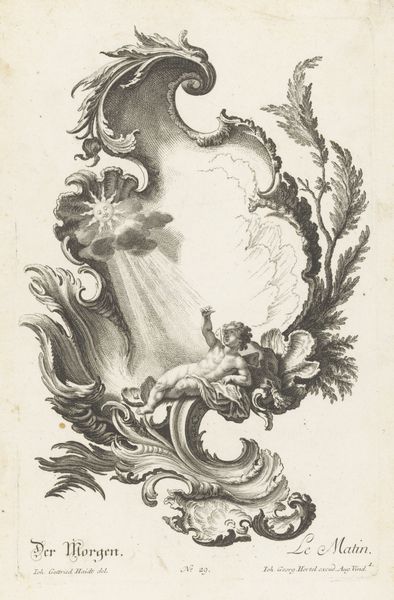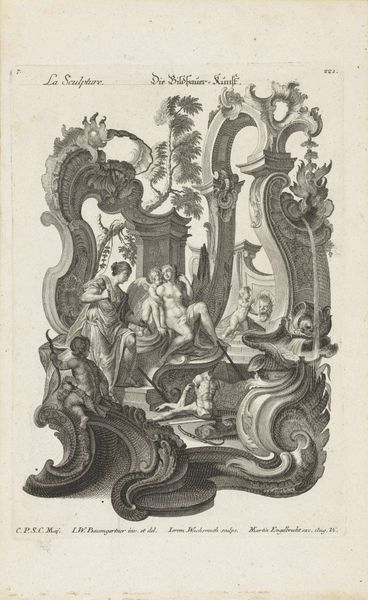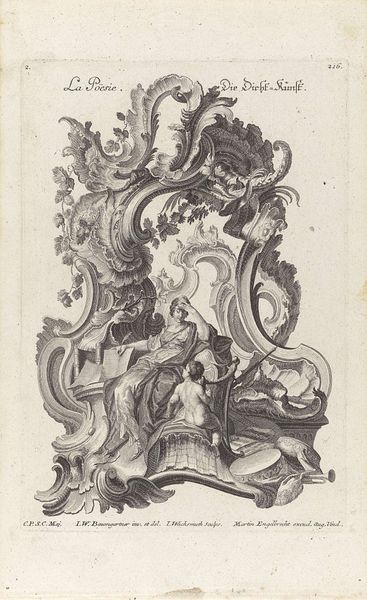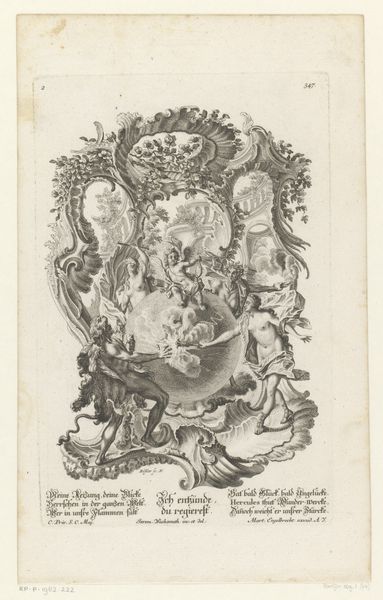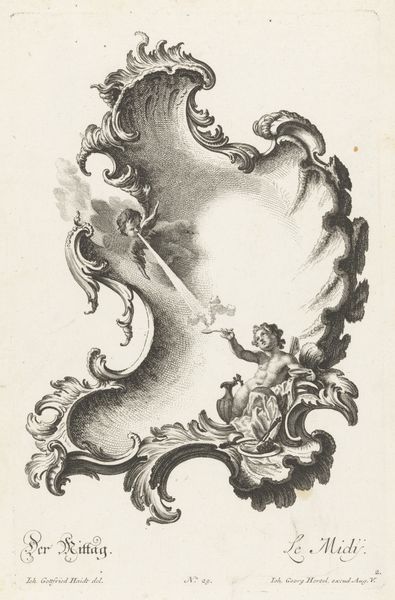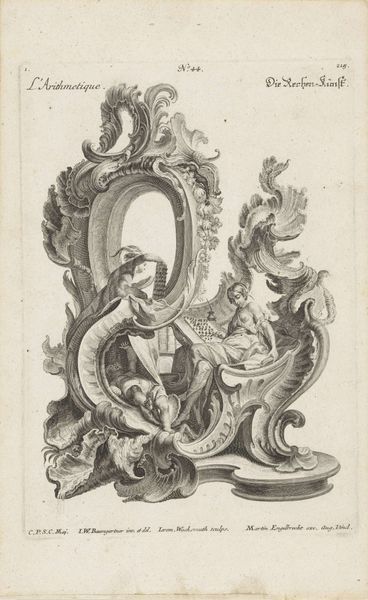
Sconce Representing Winter, from 'Wand-Leuchter die 4 Jahrseiten vorstellend' 1730 - 1756
0:00
0:00
drawing, print, engraving
#
drawing
#
baroque
# print
#
figuration
#
line
#
decorative-art
#
engraving
Dimensions: Plate: 11 9/16 × 7 1/2 in. (29.4 × 19 cm)
Copyright: Public Domain
Curator: Looking at this print, the “Sconce Representing Winter, from ‘Wand-Leuchter die 4 Jahrseiten vorstellend’” by Martin Engelbrecht, created between 1730 and 1756, my immediate reaction is to marvel at the intricacy of the lines. Editor: It feels distinctly Baroque, doesn't it? Such exuberance and dynamism frozen in these precise engravings. What was the function of a piece like this, beyond mere aesthetics? Curator: These prints served as design templates. Engelbrecht, as a publisher and printmaker, catered to the decorative arts trades. Craftsmen would have used these images for inspiration for everything from actual sconces to furniture ornamentation, informing the styles favored at the time. Editor: You can see the figure—perhaps Winter personified—extending towards candleholders that mirror that opulence with their intricate leaf designs. I am compelled by the contrast of delicate tendrils and solid forms in this piece. Curator: Indeed, and that points to how powerful these seemingly simple engravings were in shaping cultural tastes. Consider the prevalence of masquerade themes as seen in the lower portion of this print. It's a reflection of social customs as well as the ornamental vocabulary favored at the time. Editor: How do you think Engelbrecht navigates the challenges inherent in monochrome work? To me, this demonstrates the skillful layering of fine lines and shadows, producing a three-dimensional presence. Curator: Absolutely. What appears now to be merely "decorative art" actually reflects specific class dynamics, design institutions, and distribution networks in that historical period. This was no arbitrary assembly of pleasant images. Editor: Considering the impact it might have had on contemporary decorative work, I have gained so much more from seeing all its elements individually as we’ve gone through. Curator: I’m so glad we took time to examine it through this lens. I think this discussion of "Sconce Representing Winter" allows a new insight into 18th-century culture and aesthetics.
Comments
No comments
Be the first to comment and join the conversation on the ultimate creative platform.
